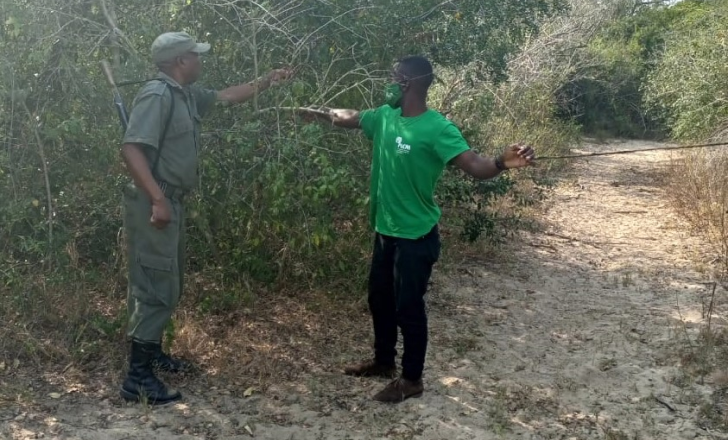António Simão is a 26-year-old young man, born in Mafambisse, Dondo district, Sofala Province, trained in Forestry and Wild Fauna by Instituto Agrário de Chimoio (IAC) (Agrarian Institute of Chimoio).
Published at 22/08/2022
Meet António Simão, a young man who became a conservation leader at PLCM
Since he was young, he dreamed about working for the protection of flora and fauna, and in 2021 he had the opportunity to join the 2nd edition of the pre-professional internship of the Leadership Program for the Conservation of Mozambique (PLCM), the program that made it possible to achieve the dream of working in the area of biodiversity conservation.
António Simão works at Maputo National Park where he developed different conservation activities in a period of 6 months of internship. During the internship, António identified a problem within the communities, which is Conflict between humans and wildlife, he joined the Park’s chasing away team and led the group in identifying the main animal corridors that generate conflicts in the buffer zone of that Conservation Area. To minimize the problem, he started to implement techniques for the mitigation and prevention of conflict between humans and wildlife, together with the park wardenship team.
“I became a Conservation Leader through PLCM, the experiences I acquired in the pre-professional internship were very important for my professional integration. Now I am a Human and Wildlife Conflict Technician at Mozambique Wildlife Alliance (MWA), an organization that supports wildlife, communities and habitats in Mozambique,” said António Simão.
PLCM is implemented by the Foundation for the Conservation of Biodiversity (BIOFUND) in coordination with the National Administration of Conservation Areas (ANAC), with funding from the World Bank, within the scope of the Mozbio2 project, and it is essentially aimed at building a generation of conservation leaders in Mozambique, with the purpose of achieving, by 2024, the training of about 310 professionals from the National System of Conservation Areas, attract, motivate and qualify about 135 young people in conservation matters, and reach more than 7500 people in education and environmental awareness campaigns, as well as on how to arouse their interest in conservation matters.



